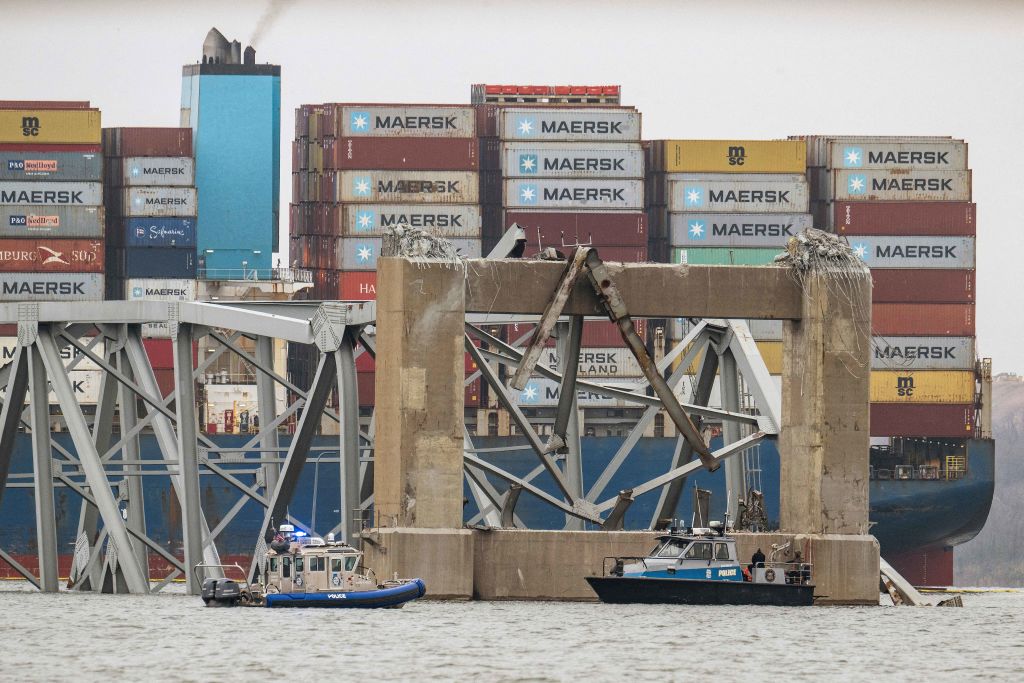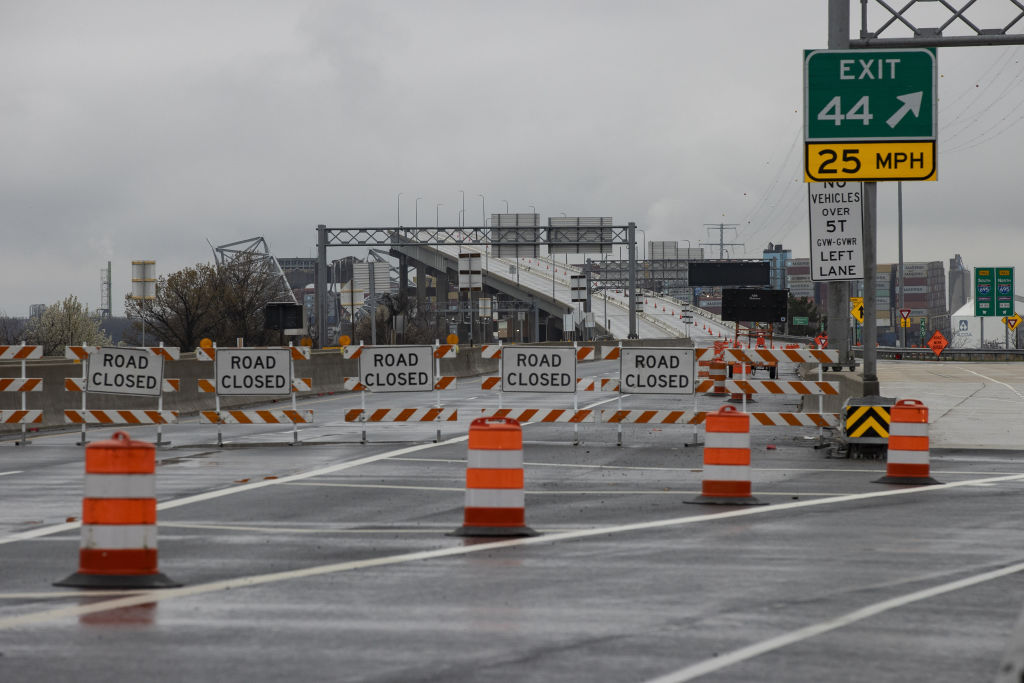Two More Victims Recovered From Baltimore Wreckage, Hazardous Material Onboard
Two more bodies have been recovered from the frigid waters of the Patapsco River but it is thought the four remaining victims may now be entombed in vehicles below the wreckage of the bridge.
A red pickup truck was recovered from 25 feet of water late Wednesday, found to contain the bodies of two members of a road repair crew that had been working on the Francis Scott Key Bridge which was struck by a container ship in the early hours of Tuesday morning, causing a catastrophic failure. This grim discovery takes the total number of workers brought from the water to four, after two members were rescued alive in the moments after the collapse on Tuesday.
There were thought to be eight members of a maintenance crew on the bridge at the time of the allision, meaning the remains of four further workers may still be in the water. Yet recovering the final repairmen may be weeks or months away, as it is now thought the vehicles they were inside are trapped under the wreckage of the bridge.
Maryland state police superintendent Colonel Roland Butler said of the scans that had been assessing what lies beneath the cold waters of the Patapsco: “Based on sonar scans, we firmly believe that the vehicles are encased in the superstructure and concrete that we tragically saw come down”.

The collapsed Francis Scott Key Bridge lies on top of the container ship Dali in Baltimore, Maryland, on March 27, 2024. Authorities in Baltimore were set to focus on expanding recovery efforts on March 27 after the cargo ship slammed into the bridge, causing it to collapse and leaving six people presumed dead. All six were members of a construction crew repairing potholes on the bridge when the structure fell into the Patapsco River at around 1:30 am (0530 GMT) on March 26. (Photo by Jim WATSON / AFP) (Photo by JIM WATSON/AFP via Getty Images)
The two men taken from the red pickup are 35-year-old Alejandro Hernandez Fuentes of Mexico and 26-year-old Dorlian Ronial Castillo Cabrera of Guatemala. Already declared dead this week was Miguel Luna from El Salvador, a father of three, and Maynor Suazo Sandoval, of Honduras.
The search for survivors was officially terminated on Tuesday night, by which point potential victims would have been in the frigid river waters for 20 hours. Now attention is turning to recovering the site to minimise damage to the environment and to reopen the port, before commencing construction of a replacement bridge.
The MV Dali was carrying approximately 4,700 containers when it struck the south pier of the bridge on Tuesday morning, and the ship’s manifest says 56 of those shipping containers housed what has been called “hazardous material”. Some of those containers were damaged, and a slick or sheen has been visible on the water surface, but U.S. Coastguard Deputy Commandant for Operations Vice Admiral Peter W. Gautier has assured there is no risk of “environmental danger” and “no threat to the public”.
The ship will be refloated by a salvage company and removed from the bridge, he said, once the Army Corps of Engineers had managed to cut away the part of the bridge that was still resting on the bow of the MV Davi.
In a further development, the Vadm. revealed the crew of the ship has not been permitted to leave and remains onboard. They are “cooperating” with authorities on “what we need” and are “very much engaged in the dialogue and the investigation”. Contrary to previous statements that the crew of 22 are all Indian citizens, Vadm. Gautier said they were all Indian except for one Sri Lankan.
Such a compliment is not unusual in modern shipping. While in recent memory the global merchant marine was dominated by British, American, and Greek officers in recent decades that has shifted towards Asia, with India and the Philippines among other states becoming key players.
It was announced yesterday that investigators from the National Transportation Safety Board (NTSB) had boarded the MV Davi and taken the ship’s ‘black box’ type data recorder, which would allow the U.S. government to get a clearer picture of the final moments before the destruction of the Patapsco bridge. Already a more detailed timeline is emerging, and one that supports previous supposition gleaned from webcam footage from Baltimore harbour and marine traffic AIS data.
Per the Associated Press, several alarms sounded on the bridge (wheelhouse) of the MV Davi at around 01:25EST, which correlates in time with the observable loss of power from camera footage and the beginning of the course deviation to starboard. A call from the ship for aid from nearby tugs was made around one minute later, and at 01:27 the ship’s port anchor was dropped in a bid to arrest its speed. The ship and bridge catastrophically allided at approximately 01:29.






Comments are closed.